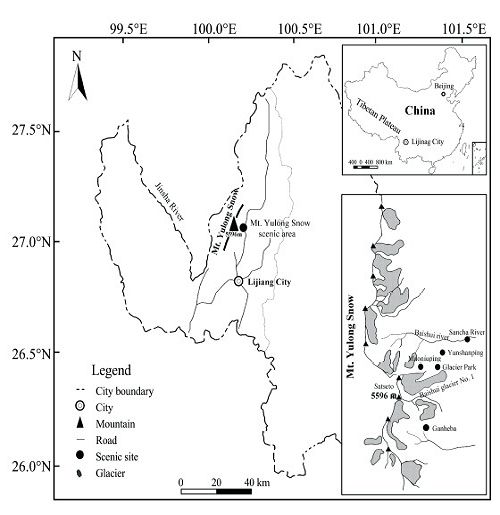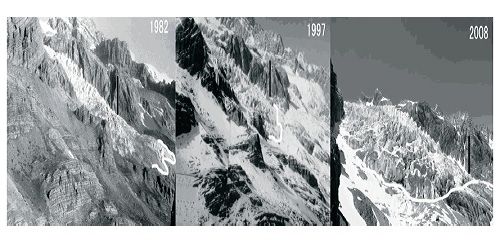Adaptation models of mountain glacier tourism to climate change: a case study of Mt. Yulong Snow scenic area
Updatetime:2013-01-30From:
【Enlarge】【Reduce】
Mountain glaciers have an obvious location advantage and tourist market condition over polar and high latitude glaciers. Due to the enormous economic benefit and heritage value, some mountain glaciers will always receive higher attention from commercial media, government departments and mountain tourists in China and abroad. At present, more than 100 glaciers have been developed successfully as famous tourist destinations all over the world. However, global climate change seriously affects mountain glaciers and its surrounding environment. According to the current accelerated retreat trend, natural and cultural landscapes of some glaciers will be weakened, even disappear in the future. Climate change will also inevitably affect mountain ecosystems, and tourism routes under ice and glacier experience activities in these ecosystems. Simultaneously, the disappearance of mountain glaciers will also lead to a clear reduction of tourism and local economic benefits. Based on these reasons, this paper took Mt.Yulong Snow scenic area as an example and analyzed the retreat trend of a typical glacier. We then put forward some scientific and rational response mechanisms and adaptation models based on climate change in order to help future sustainable development of mountain glacier tourism.
Adapting to the impact of climate warming on mountain glacier tourism, Mt. Yulong Snow scenic area must focus on group-development models that include glacier sightseeing,hiking, exploration, camping, sports fitness, leisure, popular science education, culture tourism and other tourism projects,thereby reducing the pressure of glacier tourism. In the context of global warming, mountain glacier tourism will face serious effects, such as glacial retreat. Therefore, mountain destinations should assess in advance the impacts from glacier retreat, enhance the quality of existing glacier sightseeing and experience projects, look for alternative tourism products, and extend the chain of glacier tourism industry in order to cope with the consequences of global climate warming to mountain glaciers tourism. At the same time,mountain destinations should implement a dominant strategy of ecotourism and low-carbon tourism, and ultimately promote glacier tourism sustainable development by clean energy and green consumption.

Location of Mt. Yulong Snow and scenic spots

Front variation of Baishui Glacier No. 1 during 1982–2008 (white line as BSG1 front, black line as the
reference line). The photos taken in 1982, 1997 and 2008 were respectively provided by
GuoCai Zhu, XiTao Zhao and ShiJin Wang.
reference line). The photos taken in 1982, 1997 and 2008 were respectively provided by
GuoCai Zhu, XiTao Zhao and ShiJin Wang.
Appendix





